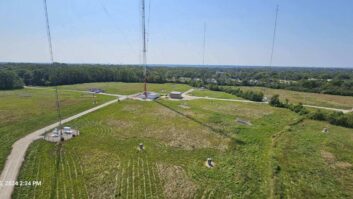In Part III of this series, we examined PLC programming methods (ladder logic and functional block diagram), and how the objects (coils and contacts) are system variables stored in the PLCs memory.
We also introduced the concept of tags, which are PLC variables of various types (Boolean, 8-bit integer, 16-bit integer, floating-point, ASCII) that are stored as database entries in the PLC. When programming the PLC, we give these tags descriptive names such as RF_Mute_Delay, Base_Current_Input, Scaled_Base_Current, Front_Panel_Mode_Change, etc.

The IEC is developing an international standard of naming conventions for PLC tags (IEC 61131-3). Whether or not these standards are widely used, for now I suggest you use descriptive tag naming and be consistent in your naming selection. The idea is that both you and anyone else modifying the code should be able to easily follow the process and discern the intent of the program. Avoid using a vague tag name such as In_Number_1; instead, select a more descriptive name such as Non_D_External_Command.
DESIGN OF A BROADCAST-RELATED CONTROLLER: CONSIDERATIONS
In this article, we’ll design a transmission line pressurization controller. I like to discuss this type of controller because it incorporates several concepts of a control system and uses both the digital and analog inputs of a PLC.
Click To Enlarge Before we begin, let’s address the design specifications and the purpose of the system. A broadcast engineer has two options to pressurize an air dielectric transmission line: either the automatic air dehydrator, which uses a compressor and desiccant, or a tank of dry-grade nitrogen with a diaphragm pressure regulator. (The debate relating to the benefits of using nitrogen vs. dry air is beyond the scope of this feature — I’ll leave that to the experts to sort out.)

However, I will point out that, in my experience, automatic dehydrators are reliable until they fail. When failure does occur, the engineer must ship the dehydrator to a repair facility, pay about $900 for the repair, and cope with two-three weeks of down time. I realize that some engineers are handy at repairing dehydrators in the field, so if you have the time, tools and aptitude, more power to you.
In contrast, nitrogen tanks are simple and inexpensive to lease. For this reason, I’ve elected to design a nitrogen tank pressurization control system in this installment. Our model is built with affordable, readily-available and extremely reliable components. This pressurization control system not only provides an engineer with redundancy, but it also can prevent an unscheduled trip to a remote transmitter site on a Friday evening.
SYSTEM DISCUSSION
Examine the system schematic for our proposed automatic line pressurization system. It includes:
1. (2) NI-300 dry-grade nitrogen tanks (the most common type used in our business — 2500 PSI );
2. (4) 24Vdc electrically-controlled valves;
3. a standard air manifold;
4. (2) 3000 psi gauge pressure sensors;
5. (3) 15 psi gauge pressure sensors;
6. (2) off-the-shelf gas regulators (single-stage type — these have little to do with setting actual line pressure in this application);
7. (2) ball-check valves;
8. The PLC, which acts as the controller for the system.
Single-Stage Pressure Regulator (Commscope) The Tank 1 portion of the schematic displays the steps of the system design and operation. The assembly begins with the type of single-stage gas regulator that has been used in broadcasting for decades. We remove the standard spring gauge from the regulator and replace it with an electronic pressure sensor (gauge pressure style with a range of 0 to 3000 psi and a 0-5 vdc output). This sensor will monitor the pressure in Tank 1; when it signals the tank is empty, the PLC will automatically switch to the alternate tank (Tank 2). The diaphragm gas regulator reduces the tank pressure to approximately 10 psi (discussed in “Operation Step by Step,” below). The PLC then opens and closes an electrically-controlled valve (Valve 1) to permit nitrogen flow to the distribution manifold and then to the electrically-controlled shutoff valve, which opens to pressurize the transmission line. Finally, a check valve is installed to prevent backflow. The manifold pressure sensor is optional, but is useful to measure the pressure in the manifold as set by the tank pressure regulators.

PROPORTIONAL RESPONSE
In previous articles in this series, I discussed the PID (proportional, integral, differential) controller which is a built-in function of many PLCs. PID controllers are widely used in familiar devices such as auto cruise controls, aircraft autopilots and industrial pressure and temperature controls.
Every PID controller utilizes variables and set points to monitor and control a process. For example, the process value variable (PV) is monitored in order to initiate a response from the controller. The PV can be temperature, a velocity, a fluid level or — as in the case of our controller — a pressure value. The controller also requires that a set point (SP) be established as a target for the PV (think target speed in a cruise control or a thermostat setting for an environmental controller). The difference between the PV and the SP is the error value (EV).
How does the PID controller employ these variables and set points in its functions? The controller’s proportional function drives the system to the SP value by applying a fixed amount of correction (in this case, releasing nitrogen). The integral function accumulates errors while correcting the PV value — if the value isn’t being reached quickly enough the integral function applies more and more correction as necessary. The differential function monitors the rate of change in the PV.
PID controllers can be a somewhat difficult to tune for proper operation. This is because all three functions (P, I and D) must be adjusted to work in concert. The differential function is the least-utilized and trickiest of the functions to optimize (it can introduce noise in the process, in fact), so we won’t use it in our pressurization controller. Instead, we’ll use the proportional function by itself.
TERMS OF USE
In our pressurization controller example, the line pressure sensor provides the process value. The set point value is the psi amount we select to program into our PLC.
Transmission line manufacturers suggest 5 psi is the optimal value, so we’ll use that as our SP. Regarding the error value, it should be small enough to keep the line pressure within acceptable limits, but not so small that it forces the controller to run excessively. We’ll select 1 psi as a reasonable EV. This ensures that when the line pressure drops to 4 psi, the controller will react and restore the target 5 psi set point.
WE NEED FEEDBACK
Consider old-school audio processors in which a rectified sample of the output stage was feedback out of phase to the input stage in order to modulate gain reduction. This approach with audio led to undesirable transients and thumps in the audio due to the relative speed with which complex audio waveforms change. With careful control, feedback in our system is acceptable since timing is very long and changes relatively small. More advanced controllers use a feed-forward approach or a cascade approach (using multiple controllers each working at a different point in the system). We don’t require these relatively complex controllers for our system.
Our pressurization controller design uses the simple feedback approach. Any change in the monitored line pressure (the process value) causes the PLC to initiate a corrective response.
DISTURBANCES IN THE FORCE
When designing a system controller, another factor to consider is the potential for “disturbances.” A disturbance is any external force which may affect not only the process value (in this case, line pressure), but the system operation as a whole.
In our relatively simple pressurization controller, possible disturbances include: changes in line pressure as a result of a leak in the transmission line; a rise or fall in pressure as a result of outside air temperature (pressure in a line will rise when solar heating warms the transmission line and will reduce if the air temperature drops); or, the system pressure changes significantly for other reasons. These disturbances must be taken into account when designing the controller and must be dynamically addressed by the controller when in operation.
OPERATION STEP BY STEP
Now it’s time to sketch out an overview of the controller operation.
The PLC monitors the line pressure from a 0-15 psi gauge pressure sensor which provides a proportional 0-5 vdc signal to one of the PLC’s analog inputs (see System Schematic and overview). So, if the line pressure is 5 psi, this corresponds to a signal voltage of 5 psi * (5 v/15 psi) ~ 1.67 vdc.
The PLC accepts this voltage as the PV and for human convenience, scales this value to 5 using a scale factor of 3 (this calculation is done by a function block programmed into the PLC — discussed in the next article). The scaled value is then continuously compared to the SP (set point) value stored in a PLC register. When the main line pressure reaches 4 psi (our threshold), the PLC begins corrective action by opening Valve 1 (after first confirming that Tank 1 has nitrogen by checking the Tank 1 Pressure Sensor; if the sensor signals empty, the PLC draws nitrogen from Tank 2 via Valve 2).
Virtually at the same time, Valve 3 is opened for 15 seconds (an adjustable interval) and nitrogen gas is applied to the main line at a pressure of approximately 10 psi (set by the diaphragm pressure regulator.) The PLC then pauses for about 10 seconds before checking the line pressure via the main line pressure sensor to determine if the SP value has been reached. If the SP has not been reached, the process continues until either:
- the SP is reached; or
- After a set number of iterations, the PLC determines that the SP value cannot be maintained (perhaps there’s a leak in the system.) The PLC then exits the process and provides an alarm to station engineers.
To achieve optimum performance from this system, the engineer can tune the interval of pressurization, the outlet pressure as set by the diaphragm regulator, and the interval between attempts to pressurize the line.
CONCLUSION
In this series of articles, we have explored the PLC structure, specifications, tags, and some of the numerous capabilities of the PLC. In this installment, we developed an on-paper design of a practical pressurization system which can be built using commonly-available, exceedingly durable, and inexpensive components. Next time, we’ll show the PLC program and list the parts you’ll need to build it.
1Gauge Pressure: Gauge pressure is the additional pressure in a system relative to atmospheric pressure. It is a convenient pressure measurement for most practical applications, and is the number registered on the pressure gauge. It is not the same as Absolute Pressure, which is the sum of gauge pressure and atmospheric pressure, or, the pressure zero-referenced against a perfect vacuum.







